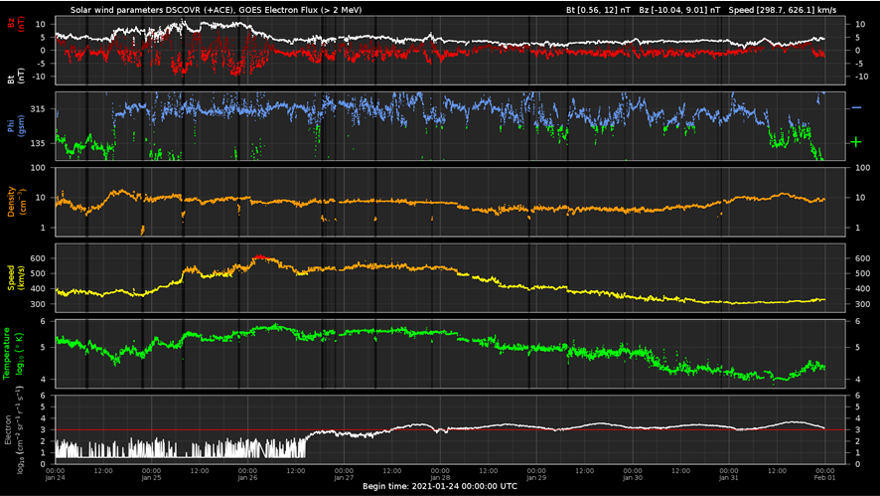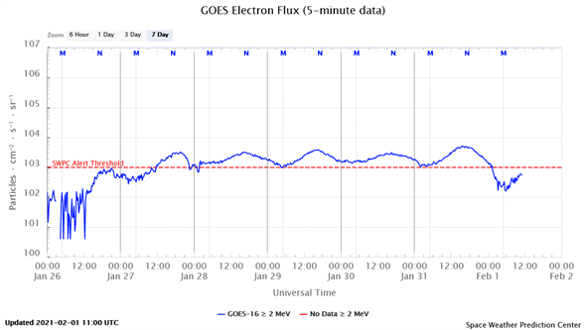The greater than 2 MeV electron flux is measured by the GOES satellites in their geostationary orbit, which is located in the Earth’s outer radiation belt. These electrons have energies of 2 MeV or more, and are associated with a type of spacecraft charging referred to as deep-dielectric charging. Deep-dielectric charging occurs when energetic electrons penetrate into spacecraft components. There, these energetic electrons can accumulate and when the charge is sufficiently high, a discharge may occur (ESD: ElectroStatic Discharge) between the electronic components causing anomalous satellite behaviour. This may result in a temporal or complete impairment of a satellite. A notable example of satellite damage due to ESD is the consecutive outage of Telesat Canada’s Anik-E1 and Anik-E2 geostationary communication satellites on 20 January 1994 that interrupted telecommunication and data transmission services across Canada for hours.

Fast solar wind streams from Coronal Holes (CHs) and interplanetary coronal mass ejections (ICMEs) are known to drive ultra-low-frequency (ULF) waves in the magnetosphere. These can transfer energy directly from the solar wind through the system to the ionosphere. These magnetic oscillations have periods ranging from 10s to 100s of seconds (known as Pc5 waves) and have been shown to depend strongly on solar wind speed. To visualize the effect of the solar wind on the Earth’s magnetosphere more clearly, one can imagine blowing across a piece of paper, making it flutter with your breath. The solar wind can have a similar effect on magnetic fields. Indeed, magnetic pulsations are essentially flutters propagating down the flanks of Earth's magnetosphere excited by the "breath" of the Sun. These are the "pulsations continuous" - or "Pc" for short. One important aspect of the Pc5 waves is their potential ability to accelerate electrons to relativistic energy within the outer radiation belts.

On 24 January, the high speed stream associated with a coronal hole started to influence the earth environment. Solar wind speed (the yellow curve in the DSCOVR data) gradually increased to 600 km/s on 25 January. One day later, the electron population became responsive to the magnetic oscillations created by the enhanced solar wind, reaching the alert threshold of 1000 pfu (particle flux units; 1 pfu = 1 electron / cm2 s sr) on 27 January around noon. The electron flux remained at moderate levels for the rest of the week, as can be seen in the white GOES curve (lower chart) with a maximum of 5,068 pfu on 31 January. As such, the 24 hours electron fluence (i.e. the values of electron flux accumulated over a full day) also remained at fairly moderate levels, and no permanent satellite outages have been reported.






